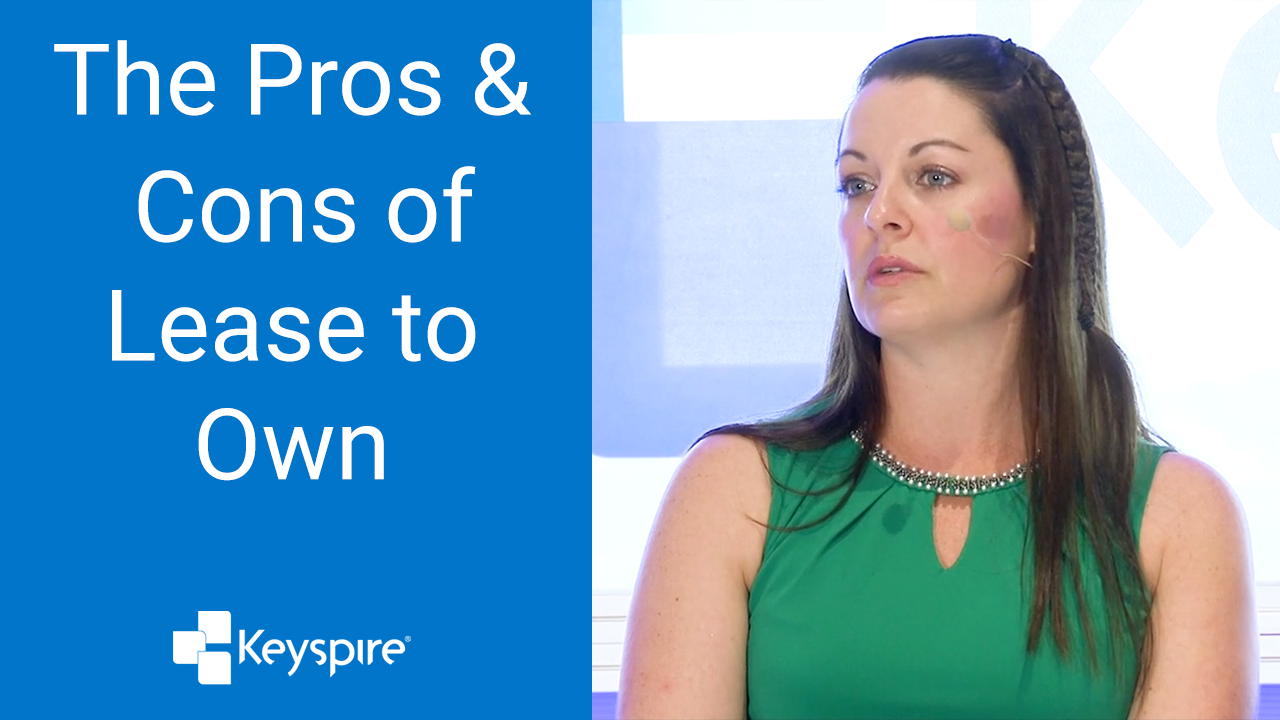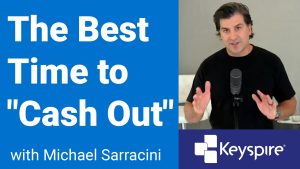The Pros and Cons of Lease to Own

Lease to Own (LTO) is an arrangement where an individual enters into a lease agreement with the property owner, with an additional “Option to Purchase” agreement. The Option to Purchase typically gives the tenant the right to purchase the property at a predefined future date for a prespecified purchase price.
LTO can be a great strategy to get properties into your portfolio and secure good tenants who will take pride in the home.
It’s a win-win, because it allows the tenant to become homeowners at the end of the term, when they may have otherwise struggled with saving up for a down payment.
But a LTO strategy can also come with risks and drawbacks.
In this video, our Investor Summit Expert Panel and I go over the pros and cons of Lease to Own.
Check out a transcript of this video below:
We haven’t spoken a lot about Rent to Own as a strategy. And if we were interested in that, what would be some of the pros and cons of that approach? Specifically, we have a property that I would consider using a rent to own as an exit strategy. And do any of you do that personally?
Great question. Let’s start with, I’m gonna start with maybe Judi. Judi is the Rent to Own expert in my life. It depends, for me, it depends on how you’re gonna use the Rent to Own. Because if I were having a Rent to Own, I would sandwich it. I would I would buy the property and it’s a good strategy to get properties into your portfolio as well as to get properties out of your portfolio.
So to get it into your portfolio, I could, maybe go to Dale and buy his property and say, I’d like your property and I’ll pay you this amount for it. And although I’m not gonna live in it, I may put another tenant in it. Now I’ve gained control of Dale’s property and I’ve got a tenant in there and they’re renting it, and they’re doing whatever, and it buys me time to go qualify for that property perhaps.
So it’s a really good strategy to buy properties, is Rent to Own from other people, and then put other tenants in it. As an exit strategy. It’s really good. The benefit of it is that you typically, get more rent. So you break out the rent though, you have to have your rent portion and then your option portion.
And the option is really a contribution towards the down payment. When you’re looking at buying a property and you have a Rent to Own tenant, one of the advantages as well is they come up with a deposit. They give you a little bit of a deposit. So when you are doing your cash on cash return, , putting your deposit down on this property, you may have to put a hundred thousand down, but somebody came to you with 20,000, so you’re only calculating that at 80,000.
Now you got 20,000 back in your pocket, right? So it allows you to do something else. So that’s one of the advantages is you get money up front, in a Rent to Own. As an exit strategy it’s great because you know what you’re gonna do at that time and you can time it around your mortgage so that you don’t have penalties and things like that.
I’ve got a mortgage that’s renewing in three years, maybe I want to exit out of this one. Put a Rent to Own tenant in it, and now you’ve saved yourself. You know exactly what’s happening in three years. You’ve got a tenant that’s going to buy this from you, and that’s all part of your plan. It can be part of your financing plan as well as part of your taxation plan.
There’s all sorts of ways to use Rent to Own, to build your portfolio and to exit your portfolio. And your Coaches and Mortgage Brokers can really help you with that and help you with how you set that up so that you’re helping the tenant buyer.
And that’s the number one reason you would do it, is to help somebody else move forward for me. Anyway…
I think a Lease to Own, there’s different ways you can approach it. It can allow you to get into an investment property. With a lower down payment if you don’t have a lot of funds.
I think that’s one way.
On the flip side when you talk about a con, if I look back at the Ontario market, I’ll just use my street as an example. If you had to, if you had entered into a Lease to Own Agreement with a tenant buyer in say 2014 to a three year lease agreement. The market peaked in 2017.
If you had put in a passive appreciation, agreed on a purchase price of say, 5% per year. In one year the market in Kitchener jumped 25%. Two homes on my street went a hundred thousand over list price and 120,000 over list price. So if the buyer at that time had exercised that option, you left a hundred thousand on the table.
So that would be a caution.
Okay. At the risk of violating a non-disclosure agreement that I signed about a month ago with the law firm I’m gonna say this, rent to owns are… okay. I had to do some consulting work at a law firm for a rent to own situation. And law firms approached me for all kinds of weird things like this.
And I do consulting work and there was just as of this week, based on these lawsuits that went on, there was some jurisprudence that was actually set with rent to owns. What I will say is this, when you’re looking at the US market, that’s one animal. When you look at Canada, that’s a different animal.
When you look at Quebec, different animal. We’re a distinct society, right? In Quebec it’s who we are. The thing that you need to remember, if you ever engage in a Rent to Own, if you want to make sure that you’re safe and you’re protected, first of all, you gotta make sure that everything is documented and everything is good.
It’s gotta be a win-win on all sides. This situation that I basically had to do consulting work on, it was a very one-sided agreement that was made, and it was the rent… The owner of the property that basically really took advantage of some people and just caused a huge disaster. Okay? They tried to take equity.
It was a whole nightmare. Anyways, the point is, is that whatever you set up, you gotta make sure that every I is dotted, every T is crossed. You have to remember, in Canada we have OSFI, right? So OSFI is the Office of the Super. ..Office of the Superintendent of Financial Institutions, which make sure that there’s no money laundering going on in Canada.
It makes sure that there’s all these rules and regulations. So when someone is actually paying you a rent to live there and a part of their down payment is being built up with that rent, you’ve got to make sure that money is being put away somewhere so that eventually they are able to buy this property from you.
Because the challenge that has come up is people will go into a Rent to Own situation because they. I don’t know, they did some, they heard about it in the states or whatnot, and they’ve set it up completely wrong. Something that’s completely not the way that the Canadian market would handle it. And then all of a sudden the bank doesn’t recognize the down payment.
They’re going to look at it and they’re going to say that’s great. He paid a rent. He didn’t save up any money here. The other part of it is, there’s no proof. So you’ve got to make sure that all, there’s checkpoints and proofs all along the way. Whenever you get into an agreement like this, you’ve got to make sure that you’re consulting a lawyer.
You’ve got to make sure that the contracts that you actually set up are mutually beneficial between the two parties because with the precedence that just was set there’s going to be a lot of issues that potentially can come up. And as I was actually driving up on, on Thursday is when we actually got the call from the lawyers.
And they said, we want our case. So it’s important. Just make sure all your I are dotted, all your Ts are crossed. But it’s a fantastic program. You can buy a lot of properties with it and you can do a lot of good, but you’ve just got to make sure that your contracts are mutually beneficial to both sides.
Yeah, actually I have quite a bit of experience managing, doing, being the property manager for a lot of Rent to Own properties and a great deal of the portfolio I used to look after happened to be Lease to Own properties. So because your question was the pros and the cons, I think the pros are very obvious to the lease option strategy to, as Judi was saying, to start building your portfolio. Also a great way to exit the portfolio. You get the option fee upfront. More times than not, you’re getting a higher than market rent.
But what I’m gonna focus on is the tenant qualification piece. When you’re engaging in this relationship with a tenant buyer, this is somebody who may not be coming from a great financial situation.
And you mentioned as well, Terry, that the win-win is extremely important. And as the investor, let’s imagine this, your tenant buyer is not able to qualify and purchase the property at the time that you had scheduled it. You as the investor, you need to be prepared to have the conversation with your tenant buyer that might be uncomfortable or to extend their lease option period, that it may not always be so black and white.
I’ve also experienced situations where I have evicted people from a Lease to Own situation that they’re not able to pay the rent because they’re paying higher than average rent as well. And they might have just given you all of their savings when they paid you that option fee. It seems very exciting for them up at the beginning.
Again, a small handful of them may not have been so successful in the end I would always jump in and negotiate and say, Hey, how can we really exit this relationship in a peaceful, amicable way? So my word of caution would be to, legitimately qualify your tenant buyer. Get a mortgage broker in at the very beginning so that they can do some credit counseling, so to speak, that you can say, this is the plan.
In three years from now, you’re going to need to qualify for this purchase price. This is your given financial situation. This is your past challenges that you’re trying to overcome. So how can we actually map this out and set them up for success.
Thank you. Yeah, and it says, we’re spending a lot of time here, but it’s a huge topic.
It’s a very powerful strategy… Rent to Own, Lease Option. There’s all kinds of different words for this mechanism. I’ll give you my two cents, of course. I’m gonna call it Lease to Own. That’s what I like to call it. Lease to Own is has never been a primary strategy of mine.
It’s not something that I’ve ever really focused on because I’m a Buy and Hold guy. I don’t want to sell my property. I want to own my properties forever, or if I do sell them, I want to sell them strategically to shift some capital into private lending or private equity. So I ran my first 10 years of my business saying I don’t want to sell anything and every Lease to Own. I did, I would, it would be sold at the end, so I would have to go buy another property. . So that’s why it’s never been a primary focus. However, there’s some situations where it is the best, is a fantastic way to invest, not only when the market’s hot or at the top, like I talked about on Friday, because you had set a purchase price as if the market was continuing to go up.
But the primary reason, so why would you do this? Let’s be strategic, I’ll go strategic for a second. Why would you do Lease to Own, Rent to Own, to retain good tenants is the number one reason. I would say you would do it from an investor side and to help people buy a home that would never be able to buy a home.
Somebody’s in a bad situation, they can’t qualify today. So you’re essentially qualifying for them. You’re buying the house, buying the property for them and with a say a three year plan for them to be qualified within three years and then to then to get financing at a predetermined price and buy the house from you.
That’s generally how the mechanism overview works. So Amanda’s absolutely right. You buy the property. Day one is credit counseling. How are we gonna build this 36 month plan to get you qualified in 36 months? Because if they don’t get qualified, they’re not buying the property off of you. In the meantime, they have skin in the game.
They usually have a, an option payment or a bigger, some sort of down payment so that they they are now better tenants. They have the pride of ownership. They do the mulch. They don’t smoke in the house or things that you wouldn’t want your tenants doing. They feel like owners. You treat them like owners.
I would always say, man, your house looks great. Always. I even say my tenants, by the way, your house looks great. It’s always your house, not my house. But it’s certainly the Lease to Own tenants. Your house looks great. You’ve done a great job with your house. Lot of pride of ownership. You retain tenants. In times where the market might go down or supply dries up with the rental market, you have tenants where other people don’t.
To me, that’s the main advantage of going with a Lease to Own. I’ve done it a lot in the US, so my strategy in the US, Oh yeah… So the second reason I would use Lease to Own is inherited tenants. Inherited tenants. So I did this often in the US. 2009, 2010. I would go to the auctions by portfolios. Buy properties for 8,000 to $15,000.
If I bought 10 or 15 or 20 of them, I could get it for 200 grand. I could get these properties for 10,000 bucks each. Now they’re $10,000 each because there’s some problems. So I would go in and I would assess the situation. I never stepped foot in auction house, by the way, and bought and sold many properties.
This was all virtually. So once you have a system that you can follow, you can do it virtually. It does, this doesn’t work today because this, the US was in a different position back then. But the point is, I would work with the tenant and I would say, let’s set this up as in the US they call it a Land Contract in most places.
So in Ohio, in in Georgia and these places, that would be a Land Contract. And essentially I’d be the bank and they would be paying me a monthly payment, which is their rent, and with a balloon payment at the end when they qualify for financing. So it was a great way to get inherited tenants and not have them destroy the place or leave on me.
I had no oversight. So it was a way that it was managed oversight because they had pride of ownership. So to me, that’s the context of the strategy around the Lease to Own. Beacuse it all starts with, why would I use this before? How do I use this right? Is this the right strategy for me? And then we’ll get into the details and you get on the phone with any of your Coaches, they will walk through the details of the Lease to Own to the last letter and they will help you set it up.
That’s the more strategic part, free. So that’s my two cents on… my $2 on Lease to Own. Thank you . Great question.
Recent Blogs
The Best Time To “Cash Out” Is…
“When should I ‘cash out’ and sell my properties?” I hear this question a lot and it blows my…
Attract Higher Paying Tenants by Being Pet Friendly!
Optimizing an investment property is all about maximizing your income and minimizing your workload and expenses, such as tenant turnover.…
The 7-Step JV Process
“It’s better to own 10% of 100 properties than 100% of 1 property.” No matter how wealthy and successful…
Income Vs Net Worth
In today’s world, two of the most important financial metrics are income and net worth. Understanding the distinction between the…




